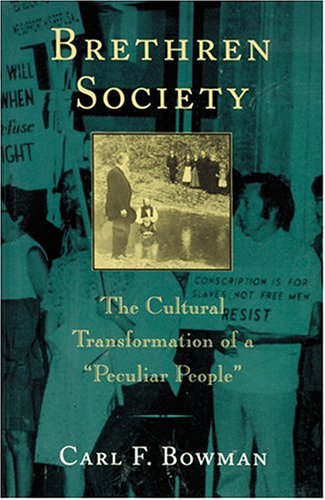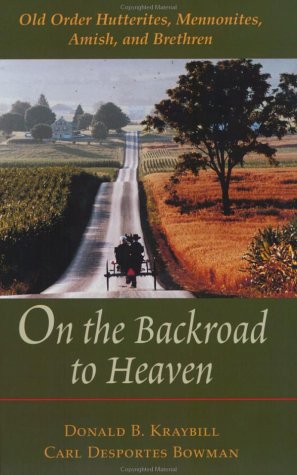Center Books in Anabaptist Studies
2 total works
What happens when a tightly bound, admittedly "peculiar" religious group confronts an open and individualistic mainstream culture? What changes take place in the lives of believers when sameness, moral certainty, and exclusiveness encounter modem pluralism, tolerance, and inclusiveness. In this, the first book ever written on the subject, Carl Bowman examines how and why members of the Church of the Brethren-historically known as "Dunkers" after their method of baptism were assimilated faster and earlier than their Amish, Mennonite, or even Hutterite cousins. Brethren Society brings to light the members' own conversations and debates on a series of pivotal controversies. Bowman shows how Brethren dealt with issues such as membership in "outside" organisations; the salaried ministry; acceptance of revivalistic soles of worship and music; participation in the American political process; military service; the holy kiss; the temperance movement and "plain garb. Throughout, Bowman stresses the importance of understanding Brethren culture on its own terms.
Cultural change, he argues, is not something to be explained away by reference to an underlying social infrastructure, but it represents a phenomenon worthy of study in its own right. Historical photographs are used to give life to the historical voices recaptured in these pages. The book concludes with a sweeping analysis of cultural reconstruction and the dilemmas facing contemporary Brethren.
Cultural change, he argues, is not something to be explained away by reference to an underlying social infrastructure, but it represents a phenomenon worthy of study in its own right. Historical photographs are used to give life to the historical voices recaptured in these pages. The book concludes with a sweeping analysis of cultural reconstruction and the dilemmas facing contemporary Brethren.
On the Backroad to Heaven is a unique guidebook to the world of Old Order Anabaptist groups. Focusing on four Old Order communities-the Hutterites, Mennonites, Amish, and Brethren-Donald B. Kraybill and Carl Desportes Bowman provide a fascinating overview of their culture, growth, and distinctive way of life. Following a general introduction to Old Order culture, they show how each group uses a different strategy to create and sustain its identity. The Hutterites, for example, keep themselves geographically segregated from the larger society, whereas the Brethren interact more freely with it. The Amish and Mennonites are more alike in how they engage the outside world, adopting a complex but flexible strategy of compromise that produces an evolving canon of social and religious rules. This first comparative study sketches the differences as well as the common threads that bind these groups together.

